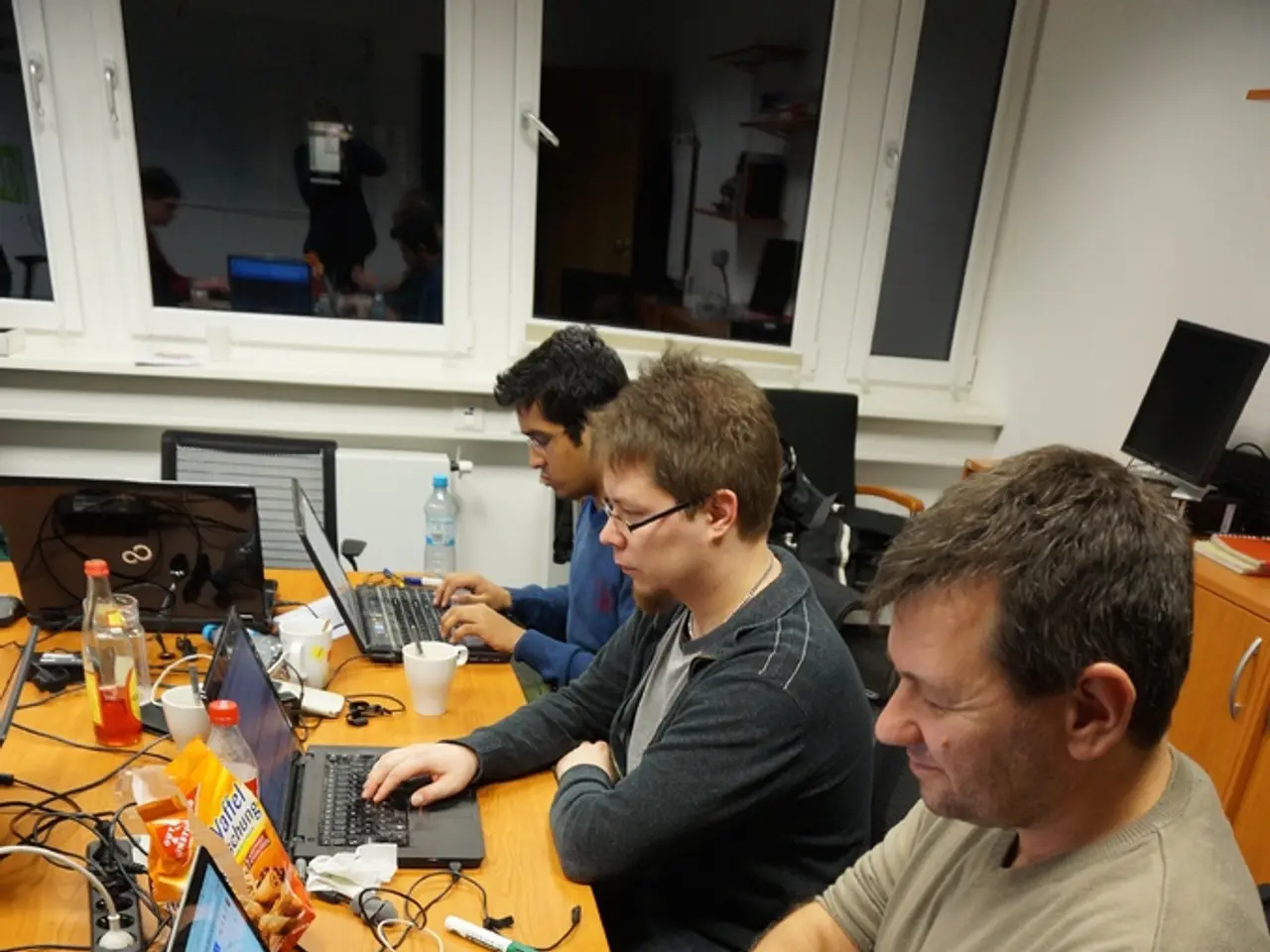Obstacles Encountered When Integrating Mobile Device Management in Any Business
In today's digital landscape, businesses increasingly rely on Bring Your Own Device (BYOD) policies, with 82% of US businesses adopting this approach, according to recent statistics. However, the rise of BYOD has introduced new challenges, particularly when it comes to securing mobile devices and maintaining employee satisfaction.
Traditional Mobile Device Management (MDM) solutions, while effective in managing devices, have limitations that leave large security gaps. They can be overly invasive, causing employee dissatisfaction, resistance, and perceived privacy violations, which can undermine business objectives and compromise the security department's effectiveness.
To address these concerns, organizations can embrace several alternative mobile security solutions. These solutions are designed to provide broader visibility across devices and networks, enhanced behavioral intelligence, and more automated, user-friendly incident response mechanisms.
One such alternative is Unified Endpoint Management (UEM) and Remote Monitoring and Management (RMM) platforms. These platforms extend beyond MDM by managing and securing all types of endpoints—including mobile devices, desktops, and IoT—through a single console. For example, NinjaOne’s platform integrates mobile device management into broader endpoint management, combining patch management, software distribution, and security controls across various operating systems.
Another solution is Endpoint Detection and Response (EDR), which focuses on detecting, investigating, and responding to advanced threats at the device level, including mobile endpoints. EDR tools often incorporate behavioral analytics, anomaly detection, and automated response actions, offering deeper insight and faster containment of incidents than MDM alone.
User and Entity Behavior Analytics (UEBA) is another approach that applies machine learning to monitor user activity patterns, detecting insider threats and unusual behaviors that traditional device management might miss. This approach allows organizations to identify and mitigate risks stemming from compromised credentials or malicious insiders more effectively and quickly.
AI-Driven Threat Intelligence and Autonomous Remediation tools employ artificial intelligence and predictive analytics to proactively identify sophisticated, evolving cyberattacks, enabling faster and more precise incident responses without overwhelming security teams.
Unified Detection and Response Platforms, such as Guardz, consolidate various security aspects into a single interface, streamlining threat detection, reducing false alarms, and enabling faster remediation workflows. They also enable better scalability and integration with productivity suites like Microsoft 365 or Google Workspace, improving user satisfaction by minimizing disruptions.
Cloud Security Posture Management (CSPM) solutions, while primarily for cloud environments, contribute to mobile security indirectly by ensuring compliance and visibility of cloud resources accessed by mobile devices, reducing overall attack surface and operational complexity.
By incorporating these alternative solutions into their mobile security strategies, organizations can move from reactive device management to proactive, predictive security governance, ensuring they are well-equipped to tackle modern mobile threats while maintaining employee productivity and satisfaction. For more information about comprehensive mobile security approaches, resources, and expertise, visit our website.
Cybersecurity teams can utilize Unified Endpoint Management (UEM) and Remote Monitoring and Management (RMM) platforms, such as NinjaOne’s, to improve mobile device security and manage various endpoints in a user-friendly manner.
To maintain proactive security governance and minimize disruptions, organizations can adopt Cloud Security Posture Management (CSPM) solutions to ensure compliance and visibility of cloud resources, indirectly contributing to mobile security.




